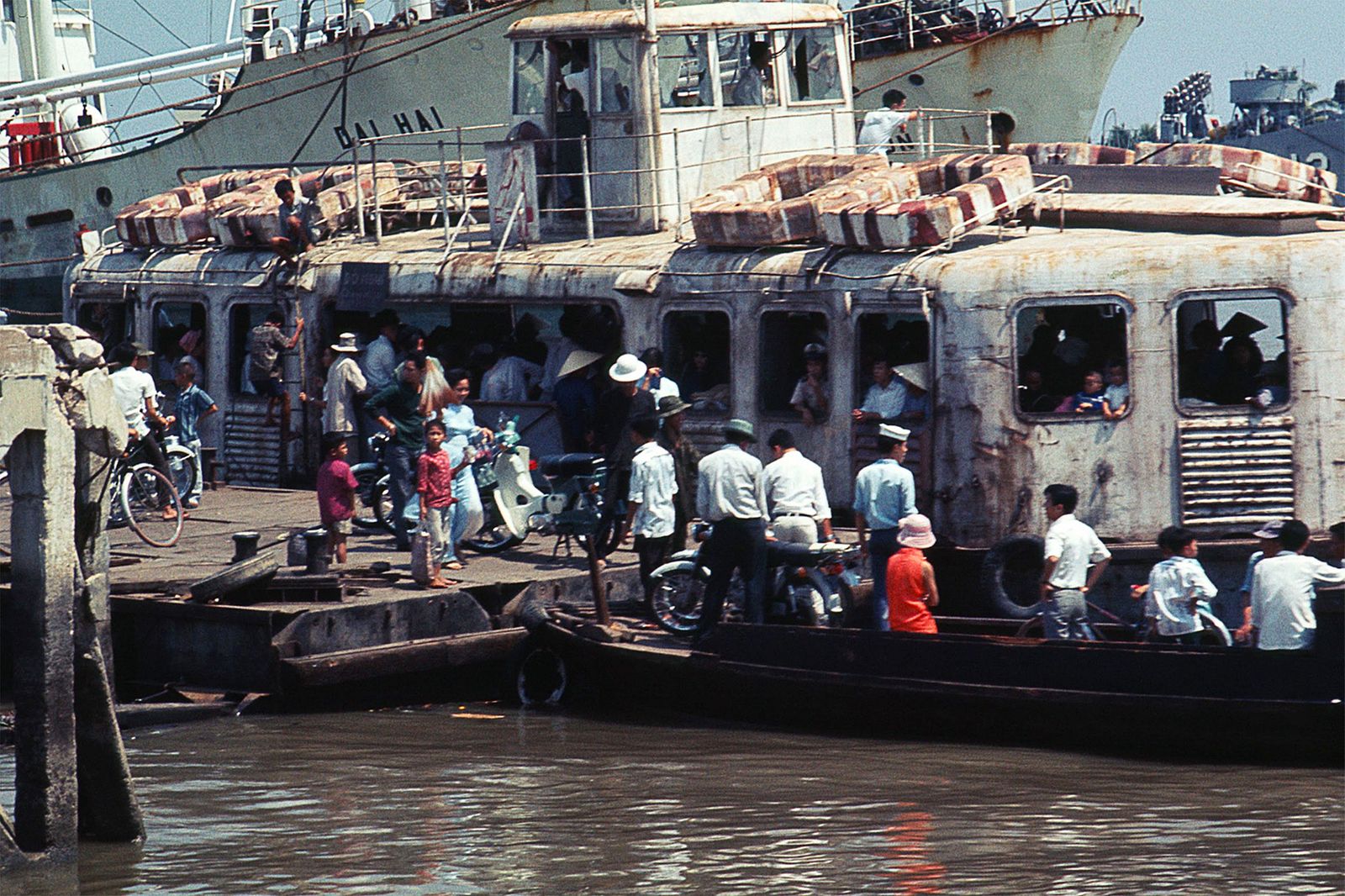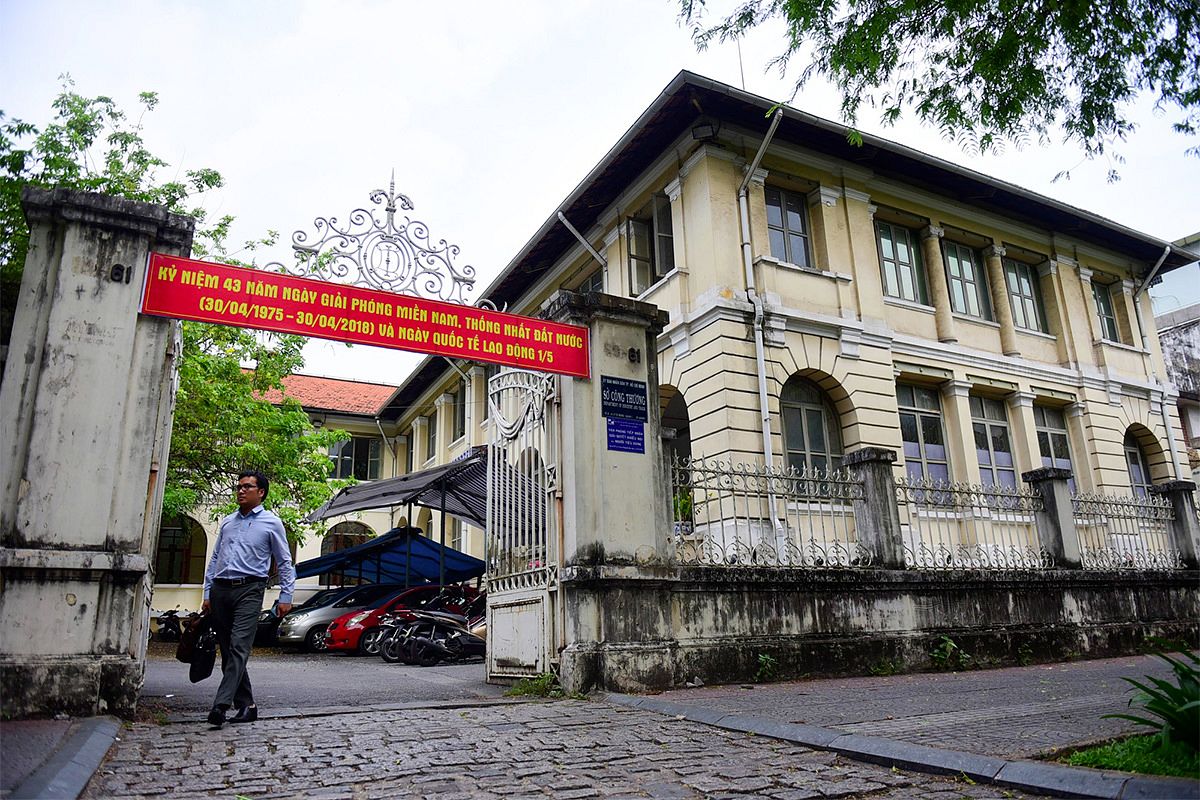In today’s Saigon, Bui Vien Street is commonly known as the city’s backpacker paradise, not to mention one of its many nightlife hotspots. It’s unclear whether urban planners in the southern hub had originally envisioned the neighborhood as Saigon’s downtown tourist quarter, but if you dig deeper into the story of the man behind the name, Bui Vien is an apt historical figure for the area.
A notable diplomat, Bui Vien remains widely recognized as the first Vietnamese to set foot in North America in the late 19th century. Born in 1839, Vien grew up in Nam Dinh province's Trinh Phi village (now a part of Thai Binh province) in north Vietnam. There are not many available details regarding his early life, but it is said that Vien’s family was academically inclined, with his father working as a local apothecarist. In 1871, he got a job working as a government official in Bo Le, a ministry whose purview comprised educational and diplomatic tasks.
Although he passed away in 1878 at the tender age of 39, Vien's entire life was dedicated to maintaining the country’s international affairs. The climax of his career was when Vien made a trek to the US to request for assistance in combatting French influence in Indochina. The tumultuous journey was historic in its own right, as it was the first time Vietnam made contact with a nation located so far away. However the details of the visit remain a hotly debated topic even today.
Vien’s westward-bound journey was first mentioned in a book by Phan Tran Chuc titled Bui Vien voi Chinh phu My: Lich su Ngoai giao Trieu Tu Duc (Bui Vien With the American Government: A History of International Relations Under Tu Duc). According to the author, Bui Vien visited the US twice: once to meet President Abraham Lincoln and another time after Lincoln passed away.
“While in Hong Kong, Bui Vien got to know an American ambassador. Thus, he decided that he would ask for help in the US,” Chuc writes. “When he arrived, despite being welcomed by [the president] with the promise for assistance, [Bui Vien] didn’t have an official [document from the government] so the trip didn’t have any concrete result.”
It’s important to note that as much as Chuc’s story serves to provide some rudimentary account of the heights of Bui Vien’s career, his chronicle needs to be taken with a grain of salt. A writer by nature, Chuc had a penchant for flowery language and a rather colorful approach to detailing his events. More often than not, Bui Vien’s trip, under Chuc’s narrative, appears to be on par with those of fantasy writer Jules Verne.
Describing Vien’s departure for the US, he wrote: “[Bui Vien] has to commandeer a fragile rowing boat, battling against ferocious waves that glides him all the way towards the immense ocean.”
“After 10 days floating at sea – 10 days wrestling with stormy weather – against scores of giant waves undulating constantly as if purposely trying to torment the flimsy boat [Bui Vien] was steering,” Chuc went on, “Bui Vien saw land at a distance, a promising destination kindling a beam of joy in his hopeful mind.”
Factually, many have pointed out the glaring errors in Chuc’s narrative, the most obvious one being his meeting with President Lincoln. If Bui Vien left Indochina for the US in 1873, it’s unlikely he could have met Lincoln in the flesh unless he left on a time machine; President Lincoln was assassinated in 1865. In later years, other writings on the trip attempt to correct this inaccuracy by suggesting Vien met President Ulysses Grant instead, but more on that later. Chuc’s chronicle claimed Vien’s time in the US, including travel and waiting, spanned more than one year. The diplomat also traveled to Hong Kong and Japan during the same visit, adding another year to his itinerary. Can a one-man crew make it to and from the US in two years?
Lastly, the fact that Tu Duc appointed only Bui Vien for such a paramount task also raises eyebrows. If the emperor did indeed feel the need to reach out for American assistance, he would have put forth some form of official document as proof of royalty along with a slew of precious luxury items of gifts and other sterling diplomats to ensure the meeting would go well. For the signing of the Nham Tuat Peace Treaty in 1862 in France, Tu Duc sent a convoy of three high-ranking court officials, in addition to 60 others, in hopes of regaining control of three southeast provinces.
The story of Bui Vien in America was touched on again in 1962 by Thai Van Kiem, then-deputy director of the Ministry of Education, who wrote a feature on it for Bulletin de la Societe des Etudes Indochinoises, Saigon. A 1990 book, The United States and Vietnam, 1787-1941, by Robert H. Miller, included a translation of Kiem’s account, which offers up a fuller picture of Vien’s trip.
Kiem’s take on the journey sticks, for the most part, to the same outline of events: Tu Duc, anxious about the French’s gradual absorption of Indochina, sent Vien overseas in hopes of finding a powerful nation with the means to aid Vietnam in the fight against the French.
In 1873, Vien got to Hong Kong, initially to seek out Chinese intellectuals, but he chanced upon the American ambassador in Hong Kong, who sympathized with his situation and agreed to help out. After hearing about how great America was, Vien abandoned the plan to vie for China’s attention and decided to head to the US instead, as even China's Minister of Foreign Affairs at the time, Ly Hong Chuong, thought that his country had too much internal hullabaloo to concern themselves with other nations.
That winter, Vien traveled to Japan on a ship, although Kiem didn’t mention if he had to paddle the vessel himself against gargantuan waves. In Yokohama, he stayed in an American ambassador’s abode before moving forward to San Francisco and then Washington.
According to Kiem, Vien finally met with then-President Ulysses Grant, who greeted the diplomat with a “lavish ceremony”. The rest panned out like Chuc’s account: with the lack of verification, the trip didn’t prove fruitful.
Although Kiem’s account of the story makes significantly more sense than Chuc’s version, alas, it’s also rife with factual inconsistencies. For one, Bui Vien’s time in Japan at an ambassador’s home was questionable, as according to official records, when he was in Yokohama, there was no US consulate to house him. While the country did indeed establish a consulate in Kanagawa in 1862, Yokohama didn’t have an official US presence until 1897. So where did Bui Vien stay or did he roam Yokohama’s streets? Did 1873 Yokohama have a Bui Vien-style backpacker quarter to house him? We will never know.
Bui Vien in America is one of those stories you hear a lot after a few rounds of booze on the man's namesake street: even though it's fascinating, the deeper you dig, the more things just don’t add up. Most maintain that at least one facet of the chronicle is true: Vien did indeed pay the US a visit, but the details surrounding the trip still remain shrouded in mystery.














